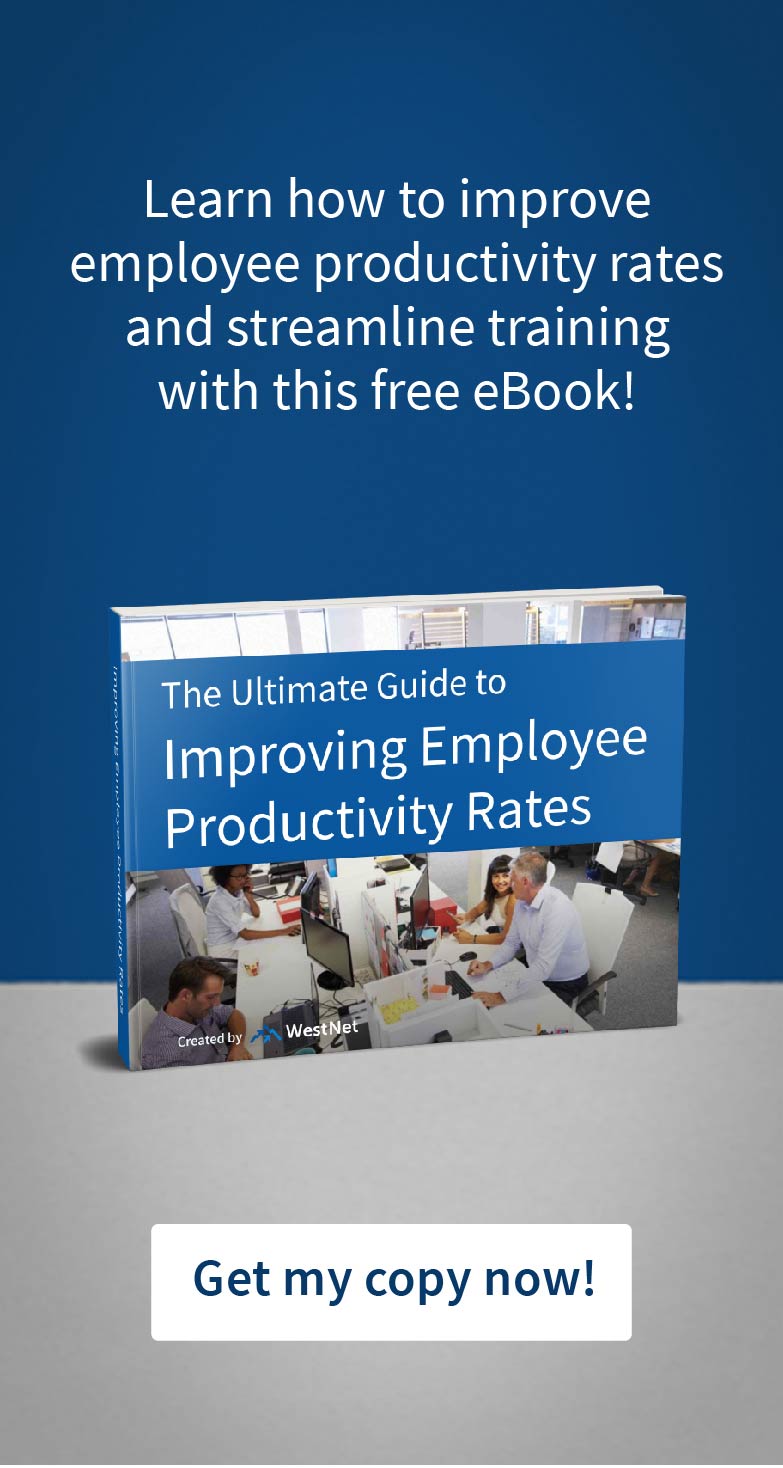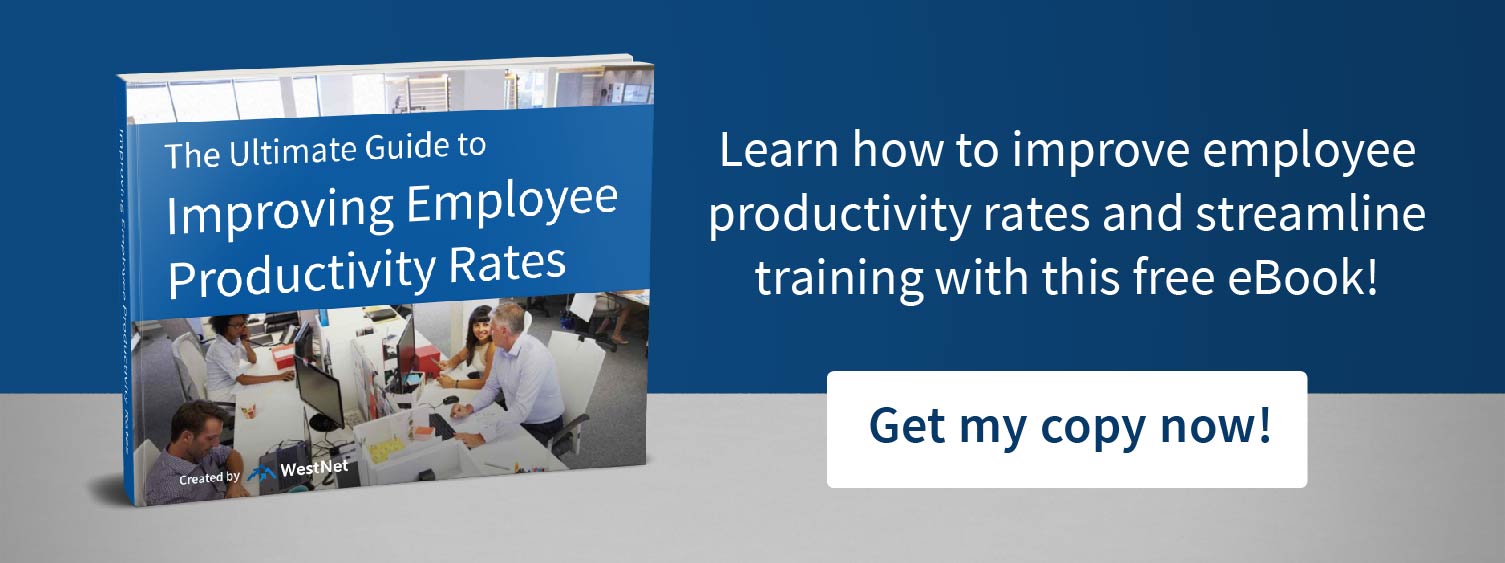Productivity is a valuable asset to understand for businesses of any kind, regardless of the way they measure that productivity. For manufacturers, it may be how many widgets are produced in a given amount of time. For training managers, productivity formulas may be estimated based on individuals strengths and weaknesses. Each organization, division, department, and the individual will have unique ways of calculating how productive they currently are with an employee —and working continually to boost that productivity.
Using a productivity formula, where Productivity = Output/Input, can help to calculate specific metrics to measure where you’re at now, determine where you’d like to go, and measure progress along the way.
In this article, we’ll take a look at what a productivity formula is, why employers use them, how they apply them and ways you can ensure employees understand their role in using formulas to boost their productivity.
What is a Productivity Formula?
Productivity formulas are merely measurements of how productive employees are at their jobs. They’re measures of actions or activities that can be used to establish baselines and to compare productivity between employees, departments, business units or even locations.
Once baselines are established, companies can use productivity formulas to identify individuals or areas of the company that are performing at higher or lower levels than others. Those performing at higher levels could be studied to glean best practices. Those performing at lower levels could be targeted for process improvements to get levels back to an acceptable rate.
Importantly, this process shouldn’t take place in a punitive way. Instead, staff should be engaged in the process, understand what information is being collected and why, and how it is being used. That engagement can pay off big dividends in terms of commitment, loyalty—and productivity.
Why do Companies Use Productivity Formulas?
Put simply; companies use productivity formulas to measure success. Why? Because time is money. The more efficiently companies can perform the greater extent to which they can manage their costs of production or service. The less it costs to produce a product or deliver a service, the more profit margin there is for the organization.
How do Companies Use Productivity Formulas?
Importantly, productivity isn’t measured by the number of hours an employee puts into their job as pointed out in this article. It’s essential that productivity is measured by actual output, not by time spent.
By understanding levels of performance, how employees’ actions are impacting productivity and taking steps to boost performance where necessary, companies can better manage costs.
Companies use productivity formulas to measure the performance of employees in various roles objectively.
Productivity should not be measured in a vacuum though, or in an ivory tower where executives pore over the numbers but don’t engage employees in the process. Rather than creating an environment where employees feel that they are being monitored—that “Big Brother” is watching them—engaging employees in the process can lead not only to buy-in but to personal commitment and boosted productivity.
Ensuring Employee Understanding
Just having productivity formulas and using them to measure performance levels is not enough. To be most efficient, companies need to engage employees in their process improvement efforts. Employees need to understand what their most important job tasks and responsibilities are, what’s expected of them when performing those tasks, and they need to be engaged in the processes by which their performance is being measured. The better employees understand the importance of their productivity and the impact on the company’s bottom line, and the more engaged they are in the process, the more committed they will be to improve. Also, employees who are involved in measuring their performance often come up with the best ideas for how work productivity can be maximized.
Ensuring employee understanding is an ongoing activity, not a once-and-done initiative. Keep in mind that the employee mix in your organization is shifting and continuously changing as new employees come on board, employee leave, or move into different positions. Also, employees’ tasks may vary, or new technology or equipment may impact how they work.
Maintaining an ongoing focus on ensuring employee understanding of productivity formulas is essential for any organization. That constant communication, of course, can be a challenge. That’s where learning management systems come into play.
How an Easy-to-Use Learning Management System Can Help
Effective learning management systems can ensure that employees are actively engaged in their training. Contrary to what some may believe, employees value training—if it is useful in helping them reach their potential. As Entrepreneur points out: “A study by Middlesex University’s Institute for Work Based Learning determined that 74 percent of U.K. workers surveyed wanted more job training in order to reach their potential. Another, by Canadian firm Go2HR, found that four in ten employees who receive inadequate training leave their job within a year.”
Speaking of productivity formulas, your productivity in providing and evaluating employee training can be boosted through an effective learning management system that you can use to:
- Build and easily modify custom courses
- Automatically issue certifications and recertifications, and track CEUs
- Easily review analytics and reports to identify areas of opportunity for improvement or best practices
Using a cloud-based platform, like WestNet provides, allows you to stay on top of your LMS and ensure that employees have regular access to the information they need to remain productive.
Your efforts to provide employees with the information, training, and education they need to boost productivity will pay big dividends. As Michael Mankins, a partner in Bain & Company points out in a Harvard Business Review article: “In the coming decade, it will be critical for business leaders to adopt a productivity mindset. Instead of focusing on continuously managing the denominator, by cutting headcount, executives should identify ways to boost the numerator, and increase output.”
That’s where productivity formulas and effective learning management systems come into play.
If you are curious to learn more about how you can create the right employee productivity formula so that you may reach optimal success, feel free to reach out and schedule a 1-on-1 walkthrough today!


